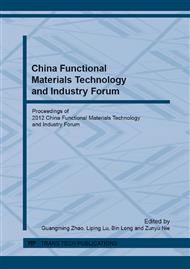p.350
p.354
p.358
p.363
p.369
p.374
p.383
p.389
p.394
The Research of Multi-Layer Metal Nets Joint Technology
Abstract:
The uniform and continuous nickel plating was electroplated on the metal net surface via a plating nickel process. Afterwards the gathered multi-layer metal nets were welded in vacuum fur-nace. This article considers that the bond strength of welded multi-layer metal nets when the tempe-rature was 900°C, 1000°C, 1100°C respectively and the plating thickness was 5μm, 20μm, 35μm respectively. The results indicate that as the temperature and plating thickness increases, the bond strength increases. When the temperature is 1100°C and the plating thickness is 35μm, the bond situation is the greatest.
Info:
Periodical:
Pages:
369-373
Citation:
Online since:
May 2013
Authors:
Price:
Сopyright:
© 2013 Trans Tech Publications Ltd. All Rights Reserved
Share:
Citation:


